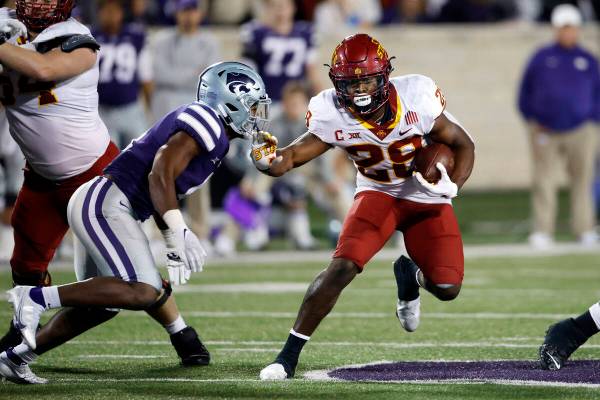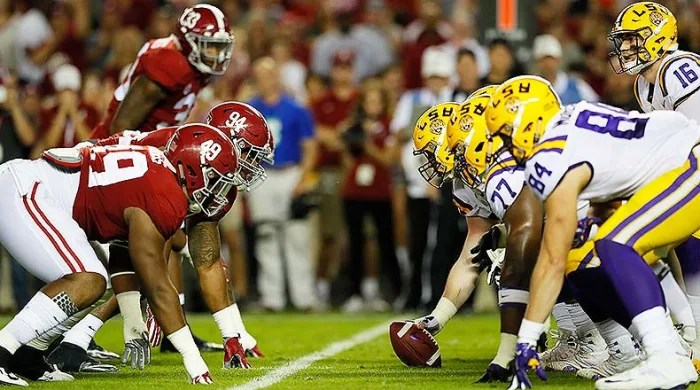Movement across the college football and media landscape is making it somewhat clear that divisions should be a thing of the past. From protecting rivalries to ensuring equity of scheduling (and removing the inequity of divisions — **cough cough** the former Big 12 North or current Big Ten West) has led to new and innovative formats of aligning schedules and rivalries to ensure the best, most equitable schedules possible as college football moves forward. Below is a stab at this new trend for the five “Power Five” leagues.
ACC
/cdn.vox-cdn.com/uploads/chorus_image/image/70133617/186657871.0.jpg)

These protected rivalries in the ACC largely clump the southern, the Carolinas and the northern teams together, with some intermingling once a school reaches its third rival. The ACC was somewhat easy to align because it has three distinct regions, noted above.
Some common threads in this ACC alignment include the maintenance of former Big East rivalries, whether Louisville/Pittsburgh, Syracuse/Boston College, or Virginia Tech/Miami. Keeping Florida State games vs Miami and Clemson are also important for media purposes as those games are usually rated higher and intense.
Big Ten


The western rivals of the Big Ten were perhaps the easiest to pick, between Nebraska, Iowa, Minnesota and Wisconsin largely being matched with each other. Once the league goes East there are far more intricate rivalries and history between schools. Fitting in Rutgers and Maryland was largely easy with Penn State, but some “central” Big Ten schools had to bite the bullet to be a third rival with Rutgers and Maryland… ahem Ohio State and Michigan State.
Big 12


The Big 12 is looking new and fresh following the departure of Texas and Oklahoma. These rivalries were perhaps the most interesting to choose since there are some schools with rich histories and others with virtually none. Preserving some rivalries from prior leagues also proves challenging, while also allowing schools to play games in states they prefer recruiting ties to remain, given the large swath of land that makes up the new Big 12 geographic footprint. Some of these include Iowa State vs Cincinnati, as the Cyclones recruit Ohio hard, West Virginia vs UCF, where West Virginia has pulled many players in the past, and Oklahoma State vs Houston, as Oklahoma State recruits Texas.
Allowing former Big Eight, Southwest Conference, and American rivalries to remain somewhat together was a challenge, but were preserved as well as possible. West Virginia also finally has a neighboring state school in Cincinnati! BYU was a challenge, but at least they can play other private religious schools, especially their former MWC rival TCU.
Pac 12


The Pac 12 stayed largely geographic, similar to the ACC, especially for the first two protected rivals. Having three pods could have been possible here, however there needed to be some parity as Arizona schools would like regular California games while schools like Utah and Colorado need guaranteed games in Arizona due to proximity in this fairly large Pac 12 geographic footprint.
SEC


The SEC was the most challenging as a league with 16 teams and several former rivalries and former potentially intense rivalries due to geography or tradition. Maintaining key rivalries like Alabama/Auburn, Texas/Oklahoma, and Florida/Georgia are no brainers. For this reason, I added the potential of a fourth protected rival.
Texas and Texas A&M have many former rivals from the Big 12 and Southwest Conference, while some of the leagues earliest rivalries further east (Alabama/Georgia comes to mind) also are steeped in tradition.
Schools like Arkansas may have to give up a rivalry or two since there are so many former, existing and potential suitors. Missouri and Arkansas were a lock since Missouri doesn’t have many other options, but picking Missouri over Oklahoma may leave some Hog fans wanting more, as the potential of an Oklahoma/Arkansas rivalry would be quite enticing, and could even surpass LSU/Arkansas.
Being innovative moving forward
These protected rivalries ensure traditions can remain while scheduling doesn’t become stale. By only having three or four protected rivals, leagues will be able to schedule all other games on a more consistent basis, ensuring that teams like Missouri can go to Baton Rouge more than once every decade. The emergence of these formats, coupled with the need for championship games to be the two best teams in a conference for the coveted “13th data point” mean these scheduling formats and protected rivalries will be the way of the future in college football.

